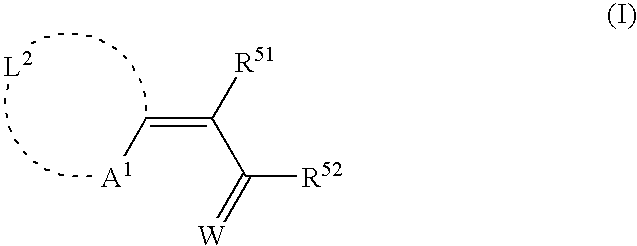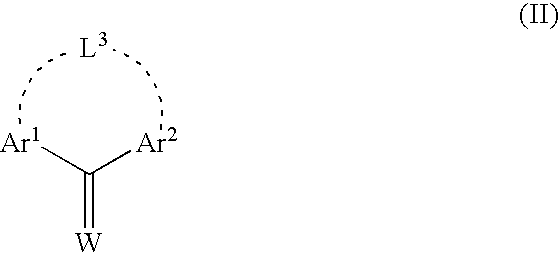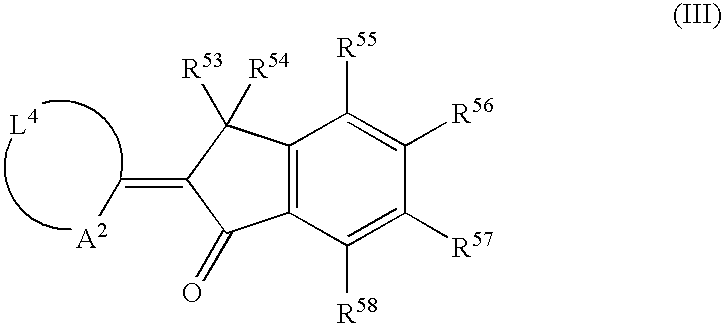Inkjet ink composition
a technology of inkjet ink and composition, applied in the field of inkjet ink composition, can solve the problems of poor color reproducibility, limited printing, screen printing, etc., and achieve the effect of excellent endurance against acid, alkali and other environments, and high masking property and coloring property
- Summary
- Abstract
- Description
- Claims
- Application Information
AI Technical Summary
Benefits of technology
Problems solved by technology
Method used
Image
Examples
example 1
Synthesis of Inorganic Hollow Particles and Surface Treatment Thereof
(1) Preparation of Polystyrene Latex
[0149]373 g of distilled water, 0.195 g of sodium dodecylsulfate, 0.65 g of potassium persulfate and 65 g of styrene were added into a 500 cm3 separable flask, and the styrene was subjected to emulsion polymerization at 80° C. to yield a polystyrene. The polymerization conversion ratio thereof was 99% or more, and the particle diameter obtained thereby was 0.42 μm.
(2) Preparation of Coated Particles
[0150]An ethanol dispersion including 1.5 g / dm−3 of the polystyrene latex obtained as described above, 1.8 mol / dm−3 of titanium tetrabutoxide, 10 g / dm−3 of polyvinyl pyrrolidone, and 1.6 mol / dm−3 of water was put into a test tube coated with TEFLON® and equipped with a stopper. This test tube was left to stand still in a forcibly-blowing oven heated to 100° C. for 1.5 hours. The resultant reaction mixture was subjected to centrifugation at 3,500 rpm for 25 minutes. The supernatant was ...
example 2
[0161]An ink composition of Example 2 was produced in the same manner as that of Example 1 except that 15% by mass of silica hollow particles produced in the following manner was used instead of 15% by mass of the white pigment 1. The surface treatment with aluminum oxide was performed using the same coating method as that for Example 1.
Preparation of Silica Hollow Particles
[0162]Hexadecylphosphocholine was dissolved into ethanol to prepare an oil phase. Thereafter, the resultant was kept at 80° C. for 4 hours, and subsequently kept at 40° C. After 30 minutes, a low-HLB surfactant was added to the oil phase. PEG and the same low-HLB surfactant were dissolved into a water phase of the resultant and, after 20 minutes, NH4OH was added to the water phase as a catalyst while the phase was stirred. The water phase was added to the oil phase to form a water-oil emulsion. TEOS was added to the water-oil emulsion to conduct hydrolyzation. The resultant was subjected to centrifugation at 2,50...
example 3
[0163]An ink composition of Example 3 was produced in the same manner as that for Example 1 except that 15% by mass of zinc oxide hollow particles produced as described below was used instead of 15% by mass of the white pigment 1. The surface treatment with aluminum oxide was performed using the same coating method as that for Example 1.
Preparation of Zinc Oxide Hollow Particles
[0164]PS beads were stirred in a solution of Zn(NO3)2.6H2O for 48 hours or more so that Zn2+ was adsorbed on the surface of the cationic polystyrene resin. After this operation, urea was added to the PS beads at an amount of 1.0 mol / dm3 per one gram of the PS beads. The pH of this mixture solution was adjusted to 5.5. In an atmosphere of N2, the solution was heated at 90° C. for 3 hours or more. The beads were then collected by filtration, washed with distilled water, and dried at room temperature. Zn5(OH)6.(CO3)2 coated with the resin was dried and fired at 550° C. in air for 3 hours to yield zinc oxide holl...
PUM
| Property | Measurement | Unit |
|---|---|---|
| volume average particle diameter | aaaaa | aaaaa |
| particle diameter | aaaaa | aaaaa |
| particle diameter | aaaaa | aaaaa |
Abstract
Description
Claims
Application Information
 Login to View More
Login to View More - R&D
- Intellectual Property
- Life Sciences
- Materials
- Tech Scout
- Unparalleled Data Quality
- Higher Quality Content
- 60% Fewer Hallucinations
Browse by: Latest US Patents, China's latest patents, Technical Efficacy Thesaurus, Application Domain, Technology Topic, Popular Technical Reports.
© 2025 PatSnap. All rights reserved.Legal|Privacy policy|Modern Slavery Act Transparency Statement|Sitemap|About US| Contact US: help@patsnap.com



